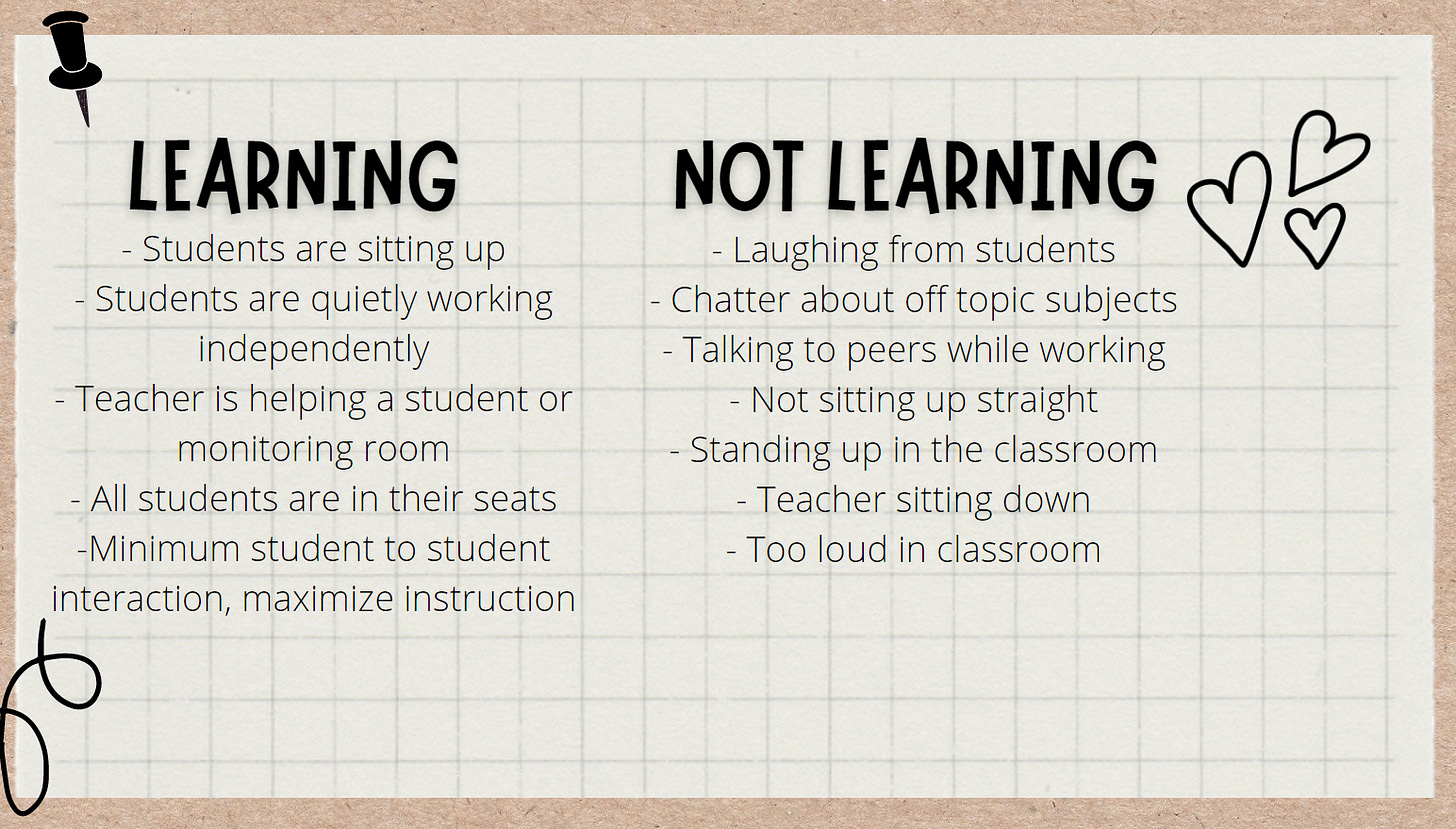What Does Learning Look Like?
Before you read this article, a quick thought exercise. In your head, imagine what a classroom looks like where all the students are learning and engaged. Think of some words that describe this classroom and what the students are doing. How are they interacting with each other, if at all? What is the teacher doing?
Now, imagine a classroom where learning is not taking place. What are the students doing? What is the teacher doing? What are students discussing or working on? What does it sound like?
If you are like most people, your break down probably looks a bit like this:
For the longest time, I was very intentional and strict about how my classroom should look. If I knew visitors were coming or I was being observed, I would tell the students that they needed to look like they were learning. I would constantly lie to them that in the “real world” they needed to sit up straight all the time, spend every second productively, and never question authority. But in reality, I would give students expectations that I found difficult to follow myself.
Today, let us discuss a bit about our own expectations of what a classroom should look like and what we make students do.
The “Perfect” Classroom
I used to believe that the perfect classroom was where students where strictly on task all the time, only talked to me or their peers about the content, and were always actively doing something. They also needed to look like they were learning too. The term SLANT (sit up, lean forward, answer questions, no talking, track speaker) was a staple in my classroom. If anyone walked in I wanted them to know that my classroom was where learning was happening.
And all of the students hated me for it. They constantly complained, acted out, and created games to tease me and break the rules. I loathed the days where I had to punish students for not sitting up straight in class and begin a power struggle in front of the class. It was not conducive to learning, it was just performative.
Performative Teaching
Teaching in a classroom where students have to act and look a certain way is strictly performative. There is not a job anywhere (besides maybe Amazon) where you are forced to be silent, only talk about work, and maximize output. During work, most people find time to joke around, build relationships, stare out into space and day dream, and talk around the water cooler. So why do we expect students to constantly produce learning output in ways that are unrealistic?
Why do Students Act Like Robots?
Money and resources. I know this sounds like another anti-capitalism rant, but hear me out. Think about all of the external visitors that come to your school. They are not your students family (oh how I WISH) or your peers. Nor are they community members just stopping by to observe. Majority of the time they are people with power, resources, or money that want to see how your classroom is functioning.
And how do we persuade them to give our schools power, resources, or money? We make the students act a specific way so that any outside observer believes that they are “well-behaved and maximizing learning output.”
Do these actions serve any other use? Does sitting in SLANT help a student learn better? Are we teaching students to be life ready by always being hyper productive individuals who lack social relationships? I am going to say, confidently, no.
Dissolving our Expectations
A key point I want to make is that learning does not always look like silent independent work. Learning does not always look like students strictly discussing classroom content. Learning does not always look like all students in a seat sitting straight up and staring at the speaker.
Learning can take place is classrooms that exhibit joy and laughter. Learning can take place as students communicate with each other to solve problems in math class. Learning can take place as students move around the classroom doing an activity. Learning can take place in a loud classroom.
Keeping it Realistic
I have presented a lot of extreme examples of my own experiences, and many teachers have an opposite problem in their schools. For instance, students may not have much structure at all in the school and the teacher can barely get them to behave or to do their work.
I am not advocating for no rules, I am advocating for realistic rules. Constantly questioning and asking students about their experiences is an important part of creating an equitable and positive classroom. If we create rules for students that we have difficulty following ourselves, then how do we expect students to do it?


